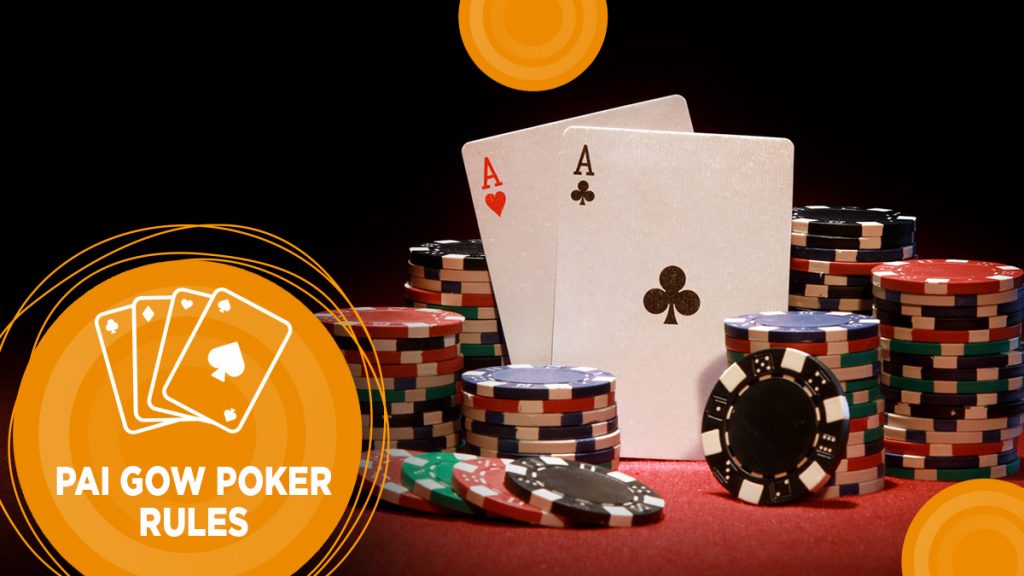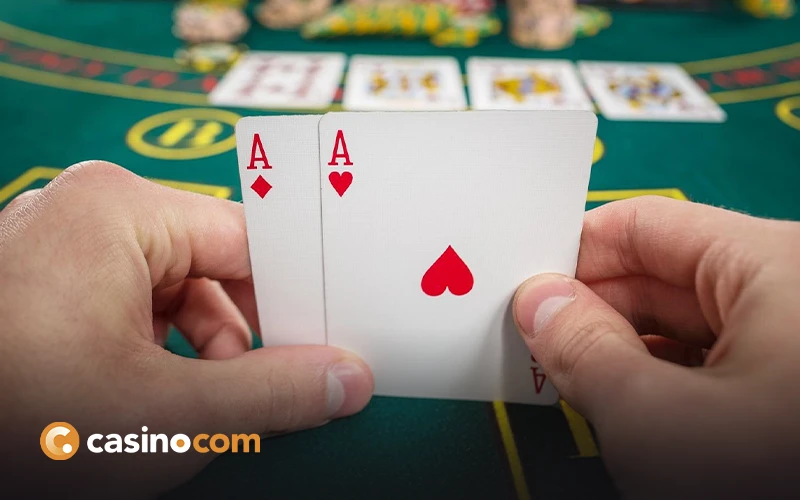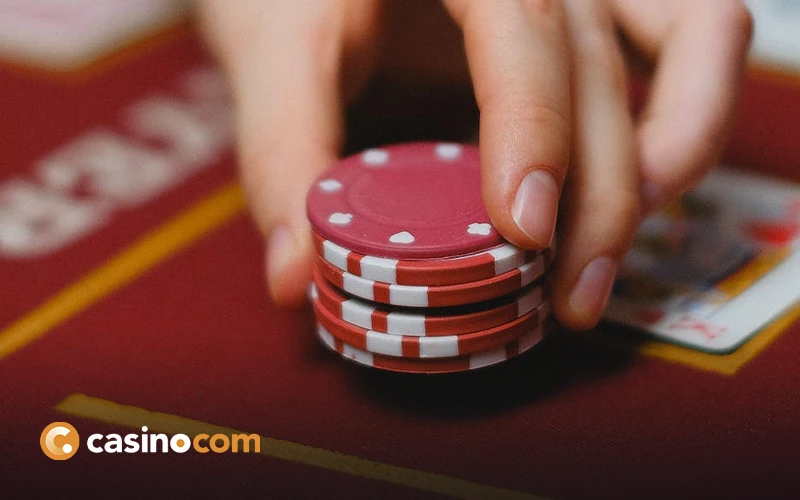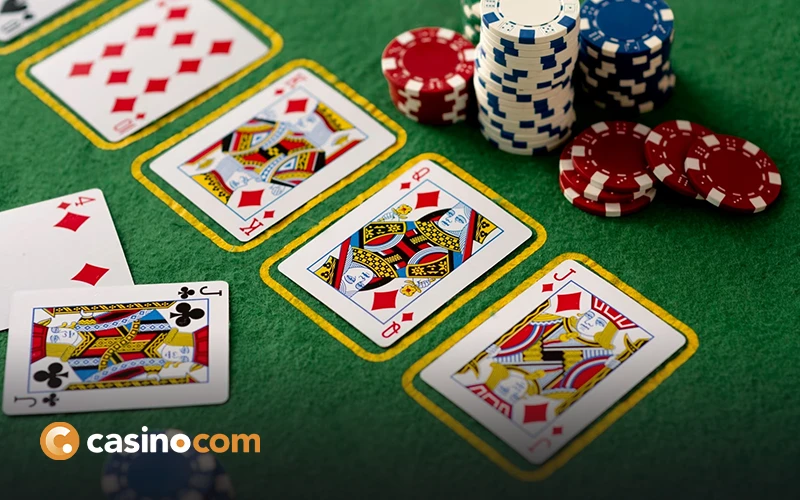Given that most poker-style games seem to have originated somewhere in the United States, the idea of a variation coming from ancient China might seem a little strange – and, well, you’d be right. While pai gow in its original form did appear in Song Dynasty China, dated somewhere around the turn of the first millennium, pai gow poker is an American invention.
Played with a standard deck of playing cards, pai gow poker is a little intimidating at first glance, as it seems to share commonalities with all sorts of casino games, both ancient and modern. It has the player vs. dealer aspect of Casino Hold’em, the hands of Texas Hold’em, and the overall simplicity of 3 Card Poker. However, it’s possible to learn the basics of pai gow in a matter of minutes, even if you’ve never encountered the rules of poker before.
The original pai gow was actually a domino-based pastime, making this game’s evolution one of the more unusual stories in casino lore. It’s also one of the precious few casino games that contain a use for the Joker in the rule-set, either as a Wild card or as a way to complete certain hands. As we’ll see throughout this guide, the Joker turns pai gow from just another poker variant into something truly unique among casino games.
Game Rules
Let’s start with (another) of pai gow’s odd gameplay features – the player and the dealer both play with two hands each. However, just like every other version of poker out there, the ranking of each hand is the key to victory. Put another way, you’ll win if your hand(s) are stronger than the dealer’s. Learning the strength of the different hands is, therefore, one of the most important parts of the pai gow 101.
We’ll come to that later, though. For now, let’s take a look at a quick step-by-step of a standard pai gow poker game from the player’s perspective:
| 1. | Make a bet to play. |
| 2. | The player and dealer each receive seven cards. |
| 3. | Both create a hand of five cards and a hand of two cards. |
| 4. | Compare both of the player’s hands to the dealer’s two hands. |
| 5. | Whoever has the stronger pair of hands wins. |
As this is a poker game, we’ll refer to the initial bet you make as the Ante wager but you might also find it referred to as the Play bet or, more simply, as just a Bet.
The interaction between the four hands in play is the core of pai gow – but things aren’t quite that simple. For one, the five-card hand is known as the High hand, while the two-card hand is called the Low hand. As you might have guessed by now, the High hand has to be stronger than the Low one. Thankfully, the complex poker terminology you might have encountered in Texas Hold’em is not used in pai gow.
What happens if your Low hand is stronger than your High hand? You will not be allowed to continue.
The only way to win in pai gow without placing side bets is to have both your hands defeat the dealer’s hands. You will lose if the reverse happens. The far more likely scenario is that the player and the croupier will claim one hand each, which results in what’s known as a Push. When this happens, the player’s bets are returned and the game is effectively void. If all four hands are equal in value, the dealer wins.
| Dealer Hand | Player Hand | Outcome |
| Both Hands Stronger | – | Dealer Wins |
| – | Both Hands Stronger | Player Wins |
| One Hand Stronger | One Hand Stronger | Push* |
| Value Equal to Player | Value Equal to Dealer | Tie = Dealer Wins |
*Note the difference between a Tie and a Push, as they’re superficially similar to each other. In pai gow, a Tie is effectively a loss for the player, while a Push is closer to a true draw.
Just like every other casino game, pai gow has a House Edge that gives the dealer an advantage at all times. This number varies between 2.84% and 1.3% depending on a number of factors, including how skilled the player is and how much the casino takes as a commission from player wins. One of our previous points, that the dealer wins Tied games, is also a contributor to the house edge. In any case, this number should be easy to find, whether you’re playing online or offline.
Before we conclude this section, let’s discuss the elephant in the room – the Joker. The Joker (not the Jack) creates pai gow’s 53-card deck. In the Low hand, it can only be used as an ace. However, if it’s included in the five-card High hand, the Joker can substitute for any card or suit required to complete a Straight or Flush. As in slots gameplay, the Joker is a utility card that doesn’t have a set value.
Types of Bets
The basic version of pai gow poker has even fewer betting options than Casino Hold’em, which was created as a stripped-down version of Texas Hold’em. In Casino Hold’em, you make mandatory Ante and Raise bets and an optional Bonus bet. Pai gow only demands that you make the initial Ante wager. Having said that, you may find a Bonus bet at some pai gow tables, as well as a (much-rarer) seven-card Fortune wager.
To summarise, here are all the possible betting options in pai gow poker:
• Ante – this is a bet required to play.
• Bonus – this is a side bet on whether you’ll get a Three of a Kind or stronger hand.
• Fortune – another side bet on the value of a seven-card hand.
In general, if you want to play the Fortune side bet, you’ll need to find a variant of the game called Fortune Pai Gow. This wager actually has a different form at offline casinos, where it is associated with progressive jackpots. There’s also an Envy bonus that’s related to the Fortune bet at land-based casinos:
• Envy – paid if somebody else at the table has a Four of a Kind hand or better.
Obviously, in online modes, with only the player and dealer taking part, the Envy bet isn’t relevant. Resorts in New York State, California, and Washington have been known to offer it to visitors, however. Be warned – experts actually advise against placing any side bets at all in pai gow, as they give diminishing returns due to the enormous house edge applied (up to 8% for Fortune).
As a final point, side bets are usually paid out (or lost) regardless of whether you managed to beat the dealer or not.
Payouts and Odds
All forms of pai gow are fixed-odds games. Contrast this with Texas Hold’em, in which a player’s chance of winning is determined by all sorts of different things. Unusually, quite a lot of pai gow games online have human dealers but there are still plenty of creators that produce the classic RNG-based experiences. For an eye-catching but bare-bones game, try Pai Gow by renowned developer Microgaming, as all side bets are absent from the interface.
The odds and payouts for the side bets in Pai Gow are:
| Side Bet Name | Odds | Probability |
| Five Aces | 400:1 | 0.000007 |
| Royal Flush | 150:1 | 0.00017 |
| Straight Flush | 50:1 | 0.001 |
| Four of a Kind | 25:1 | 0.002 |
| Full House | 5:1 | 0.027 |
| Flush | 4:1 | 0.04 |
| Three of a Kind | 3:1 | 0.049 |
| Straight | 2:1 | 0.072 |
| Fortune 7-Card Straight | 8,000:1 | 0.0000002 |
| Royal Flush + Royal Match | 2,000:1 | 0.0000004 |
| 7-Card Straight w/Joker | 1,000:1 | 0.0000012 |
We’ve missed the Bonus bet out because the probability of winning this wager is dependent on the High hand you’ve managed to put together. This decreases from 0.049 (Three of a Kind) to the nearly impossible Five Aces. Wondering where that fifth ace is coming from? It’s a hand made from the four suited aces plus the Joker. Despite the fact that it’s just a single card, the Joker adds a new paradigm to the standard poker rules.
In Summary
While its standard gameplay is complicated a little by the side bets on offer – and these can vary enormously between one casino to another – pai gow poker manages to provide a more accessible version of poker without retreading ground that’s been walked many times before. Sadly, this is something that games like 3 Card Poker and Caribbean Hold’em never quite managed, given their similarities to other games out there.
As with any other casino game, beginners are advised to try demo modes or make use of free-play bonuses before trying to tackle pai gow poker with real money. However, if you’d like to read more about poker or any other casino game before rocking up to a table (real or otherwise), continue browsing our guides section for more information on blackjack, roulette, sic bo, craps, and baccarat.

Previous: Casino Hold’Em Tips
Next: Pai Gow Tips





